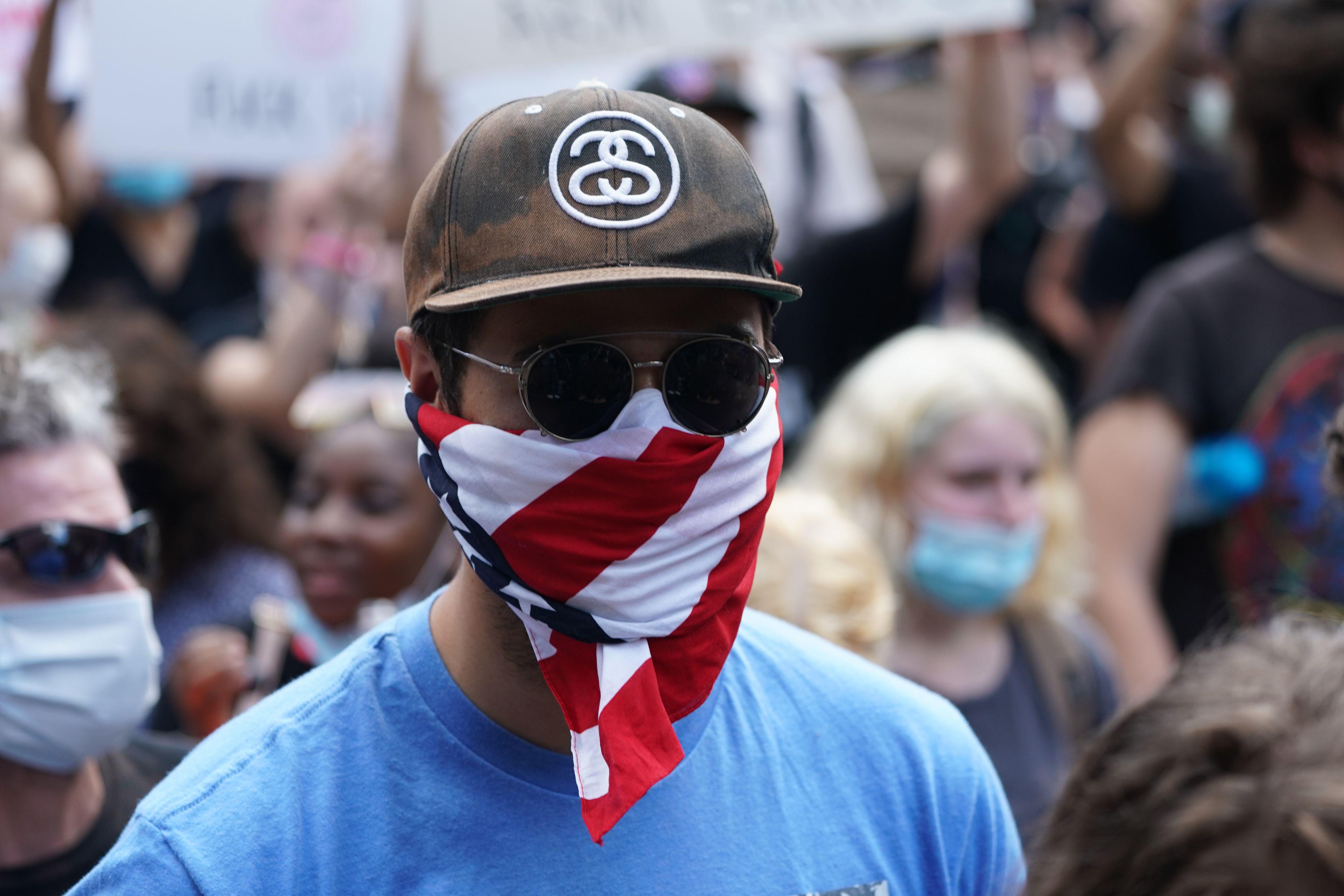It’s hard to gauge how exactly the coronavirus has changed us, especially while we’re still in the middle of the mess. But as I watched the protests for George Floyd get more widespread sympathy than I expected, even after the fires and broken windows, I started wondering about masks. I wondered, specifically, whether their widespread use during the pandemic might have somehow amplified the public’s tolerance for protest. Yes, there are a million bigger factors here, including and not limited to: the visceral horror of police officer Derek Chauvin’s cruelty; the president echoing white supremacists as he threatened to kill Americans; the jaw-dropping spectacle of police arresting a black CNN reporter while he was live on the air, even as he asked them where he should move and presented his credentials. Then there’s just the fact that this is the millionth time this awful cycle has happened. But I can’t help but think that the culture wars over mask-wearing might have had a funny side effect: Americans not known for tolerating civic unrest may have accidentally learned to visually process mask-wearers not as sinister actors concealing their identities, but as obedient do-gooders trying their best.
That we consume things differently based on the behavioral changes we’ve made in response to COVID-19 seems pretty well-established by now. Plenty of people have said they find it stressful to watch TV shows where friends aren’t social distancing, for example, absurd as that is. Mask-wearers have historically been associated with a certain amount of lawless edge. It’s a heterodox group to be sure—it includes superheroes, Anonymous, antifa, even the Klan—but what mask-wearers tend to share in American culture is a power partly derived from the anonymity you get when you cover your face.
The last few weeks might have undone that, and not just for white liberals—though, yes, if you’re on the left, you might see mask-wearers as responsible people doing their best to protect public health. But even if you’re on the right, you might have gone from hating masks because they smack of dangerous, lawless antifa to hating masks because their wearers are fearful freedom-sacrificing sheep who do exactly what the government tells them. Either way, the result would be the same: Masks used to be read as disobedient, but now, thanks to the pandemic, they’re read as dutiful and (to some, pathetically) compliant.
There has, up till now, been a rough pattern for the way Americans metabolize a certain kind of protest. Usually (and there is a usually), when an unarmed black American is killed by police and the incident is caught on video and goes viral, a few predictable beats play out in the social media rhythms of this country: As generalized outrage builds, a smaller wave of skeptics follows, insisting that the full story is not yet known and that all may not be as it appears. Protests begin. Additional facts emerge. That afore-mentioned smaller wave, which tends to start off implicitly siding with law enforcement, is still building as the first wave crests. Aspects of the defense harden: Some who deny a racist dimension might debate, for instance, whether chokeholds are legitimate. Others insist that a black man can constitute a threat to a police officer by virtue of being large or angry, armed or not, resisting or not. By the time the “he’s no angel” stories start coming out about the victim, the protesters still out demonstrating against the system that produced his death are likely desperate because the system either isn’t responding or because police have responded (abusively, off-camera, adding further injuries for which there will be no accountability).
To the skeptics—who at roughly this juncture will be joined by a broad band of comfortable Americans who consume 24-hour-news—it will look like they are needlessly escalating by doing things those comfortable Americans generally do not like. In fact, the only way protests of this sort show up on television is if the protesters are doing something this last group might find outrageous. Peaceful protests sink like a stone, unobserved and unremarked. If something controversial happens, airtime is the reward. If a protest shows up on TV, it is almost never positively presented. There’s usually some armchair quarterbacking about how injudicious the protesters were to act hastily, before all the information was out (police departments and city governments frequently ration out information to produce exactly this effect). They’re criticized for damaging their communities, for resisting the wrong way. The endpoint is always the same: When the escalation happens, disapproval ripens into fear. Perhaps some windows are broken. Perhaps something is set on fire. Maybe they’re antifa! Maybe they’re wearing masks.
That cycle has been slower to build this time, though there’s still certainly time for it. But a tiny part of that delay might owe something to the fact that mask-wearers are (even to their political enemies) silly but well-intentioned helpers now. They are seen as cautious, deliberate, and concerned with public health. At worst, they’re dupes of an overbearing nanny state. It’s just harder to read them in the old malicious way, and—now that Americans have watched police murder a black man on camera and arrest a black journalist for no reason—it’s just a little harder to default to those old familiar rhythms. Trickier to see the police as neutral enforcers of the law who simply react to protesters when they get out of control. Easier to see the cops as, well, the instigators. Now that most of us have become part-time mask-wearers, the mask-wearers look like what protesters usually are, despite the iterations of these old scripts we’ve all seen time and again: people stuck in a system that was never designed to keep them safe, doing their best with what little they have.
